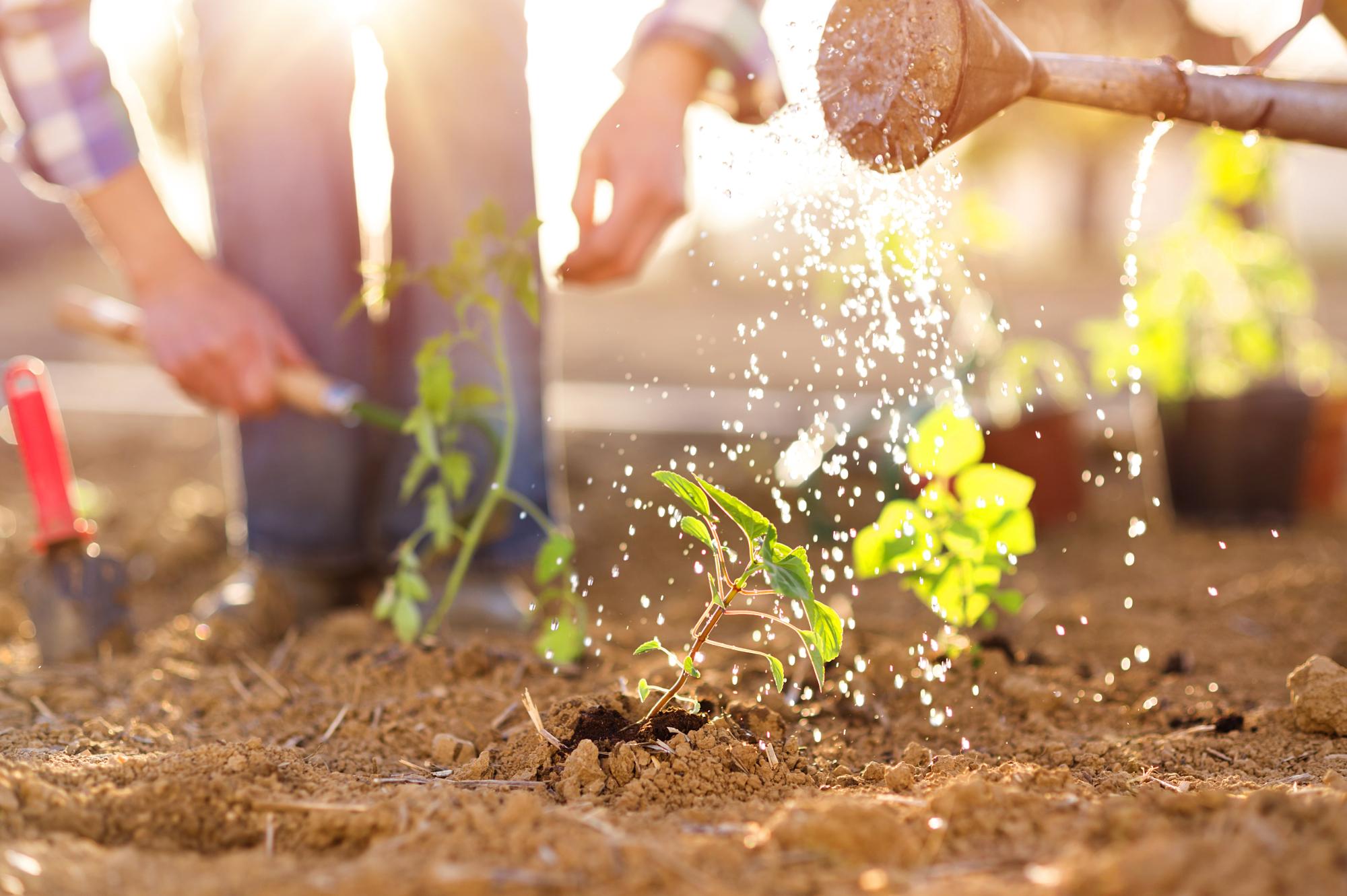1. Water your organic garden.
 Fruits and vegetables still need an inch of water a week. Towards the end of the month, you can back off a bit, as days continue to shorten and hopefully cool down. Water trees and shrubs deeply every week.
Fruits and vegetables still need an inch of water a week. Towards the end of the month, you can back off a bit, as days continue to shorten and hopefully cool down. Water trees and shrubs deeply every week.
2. Remember to weed, so flowers don't go to seed.
 Keep pulling or digging weeds. Do NOT let them flower and go to seed! That will create more problems for years to come. Some weed seeds can remain viable for years until the conditions to germinate are optimal. Do not compost flower heads - put them in the trash.
Keep pulling or digging weeds. Do NOT let them flower and go to seed! That will create more problems for years to come. Some weed seeds can remain viable for years until the conditions to germinate are optimal. Do not compost flower heads - put them in the trash.
3. Watch for these pests.
 A few destructive pests to watch for are tomato hornworm, Japanese beetles, and aphids. The key to organic pest control is knowing the life cycle of the critters you are dealing with, and keeping your plants healthy. Bugs love stressed plants!
A few destructive pests to watch for are tomato hornworm, Japanese beetles, and aphids. The key to organic pest control is knowing the life cycle of the critters you are dealing with, and keeping your plants healthy. Bugs love stressed plants!
4. Stop fertilizing trees and shrubs.
They are getting ready to go dormant for winter, so you don't want to put on new growth. Prune out dead and diseased wood.5. Mow this way.
 Lawn mowing will start to slow down a bit. Keep mower blades high. Leave the cuttings to act as mulch, cool the soil, and add nutrients as they decompose. Late in the month, reseed bare patches.
Lawn mowing will start to slow down a bit. Keep mower blades high. Leave the cuttings to act as mulch, cool the soil, and add nutrients as they decompose. Late in the month, reseed bare patches.
6. Harvest big.
 August is the biggest harvest month in the vegetable garden! Tomatoes, green beans, zucchini, basil, and cucumbers will give you more than you can eat. Experiment with new recipes, and learn to put some up for winter. There is nothing like eating your own produce in the middle of winter - you can’t buy food that good in a store! Your County Extension or other organization may offer classes. If you are a book person, I highly recommend Stocking Up. I’ve learned all I know about canning, freezing, and drying food from this book.
August is the biggest harvest month in the vegetable garden! Tomatoes, green beans, zucchini, basil, and cucumbers will give you more than you can eat. Experiment with new recipes, and learn to put some up for winter. There is nothing like eating your own produce in the middle of winter - you can’t buy food that good in a store! Your County Extension or other organization may offer classes. If you are a book person, I highly recommend Stocking Up. I’ve learned all I know about canning, freezing, and drying food from this book.
7. Trim vined plants.
In mid-to-late August, trim the tips of tomato and vining winter squash plants. This will keep new flowers and fruits from forming, and plants will put energy into ripening existing fruits.8. Prep your pot herbs.
 Dig and pot up herbs you want to bring inside. Make a winter kitchen garden!
Dig and pot up herbs you want to bring inside. Make a winter kitchen garden!
9. Compost leftover plants.
When you have harvested all of one crop, pull the plants, compost them (if they are free of disease and pests), and seed a cover crop for winter. It will add nutrients to the soil and improve its structure.10. Divide irises and day lilies.
It’s not too late to divide irises and day lilies. Did you know day lilies are edible?11. Order spring flowering bulbs.
I recommend daffodils, tulips, snowdrops, crocus, muscari, and the heavenly scented hyacinth. As tired as you may be this time of year, remember it is still a busy month. Pull together your energy to gather and appreciate the abundance. You can slow down a bit in September!Would you like to be the first to hear about our new products and more? Sign up for our Nature’s Path Newsletter.








